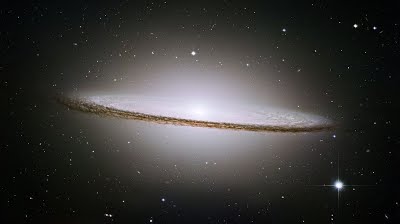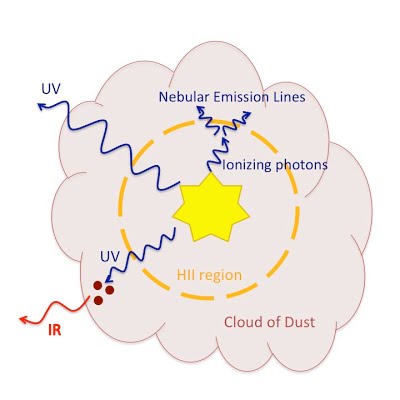What is Interstellar dust?

Imagine we scale down size of the solar system so that the Earth is only 30 feet apart from the sun. In this scale model of the universe, the closest star to the Sun would be about 1700 miles away. It means that if your solar system model is located in Boston, the closest star to the Sun would be somewhere in Texas! Although the vast space between stars is more devoid of matter than even the best vacuums created in laboratories on Earth, this space is not entirely empty. It still consists of hydrogen, helium, and trace amounts of heavier elements, collectively which we call the “interstellar medium.”
About 99% of the interstellar medium is made of gas and the rest is “dust”. Interstellar dust are small solid particles, mainly less than ~ 0.0001 of the diameter of human hair, that is mixed with the interstellar gas. The interstellar dust has an important role in the formation of stars and planets in galaxies. Although dust constitutes only about 1% of the interstellar medium, it can have a profound effect on our observations of stars. Namely, dust particles can block much of the visible and UV light emitted from stars. Imagine the sun on a foggy day; it looks dimmer than it would on a sunny day. The reason is that particles in the air have blocked some of the sunlight. But, the amount of light and energy that is blocked is not lost, it just gets transferred to longer (infrared) wavelengths.

The same phenomenon absorbs starlight in galaxies and reradiates it at the longer wavelengths of infrared light. Because of the dust in our own galaxy, the Milky Way, we can not see the center of the Milky Way in visible light even on a very clear and starry night! Therefore, in order to measure the total light of the stars in a galaxy we need to know the properties of the dust, including its geometry and chemical composition, to calculate how much of the starlight at different wavelengths is absorbed.
With access to the Keck telescopes, the largest optical telescopes in the world, and using high resolution spectrometers, the MOSDEF team is able to accurately measure the degree to which dust obscures the most massive stars in very distant galaxies. In order to do that, we measure a quantity called “Balmer decrement”. Balmer lines are spectral emission lines of the hydrogen atom that result from electron transitions from higher levels down to the second energy level. These transitions happen when a hydrogen atom is excited due to absorbing energetic photons transmitted from hot and massive stars. Balmer decrement is referred to ratio of the intensity of two Balmer emission lines, the hydrogen-alpha line at 656.5 nm to the hydrogen-beta line at 486.3 nm. The ratio of these two emission lines stays almost the same in a wide range of different interstellar environments, such as different temperatures and electron densities. But as the two lines have different wavelengths, dust particles, if present, would obscure them at different degrees. Shorter wavelengths are absorbed more by dust particles than longer wavelengths. This effect is called “reddening”, as it causes your spectra to look redder in general. Due to reddening, in the presence of dust, hydrogen-alpha – which is at a higher wavelength – gets more attenuated than hydrogen-beta and their ratio (i.e., Balmer decrement) becomes larger than its theoretical value. In the MOSDEF survey, we can measure the ratio of hydrogen-alpha to hydrogen-beta intensities very accurately and by calculating its deviation from the theoretical value we are able to estimate the degree to which dust obscures the light of massive stars in the galaxies. With these measurements, our team is able to unveil the obscuring effects of dust in order to reveal the total number and types of stars in these galaxies.